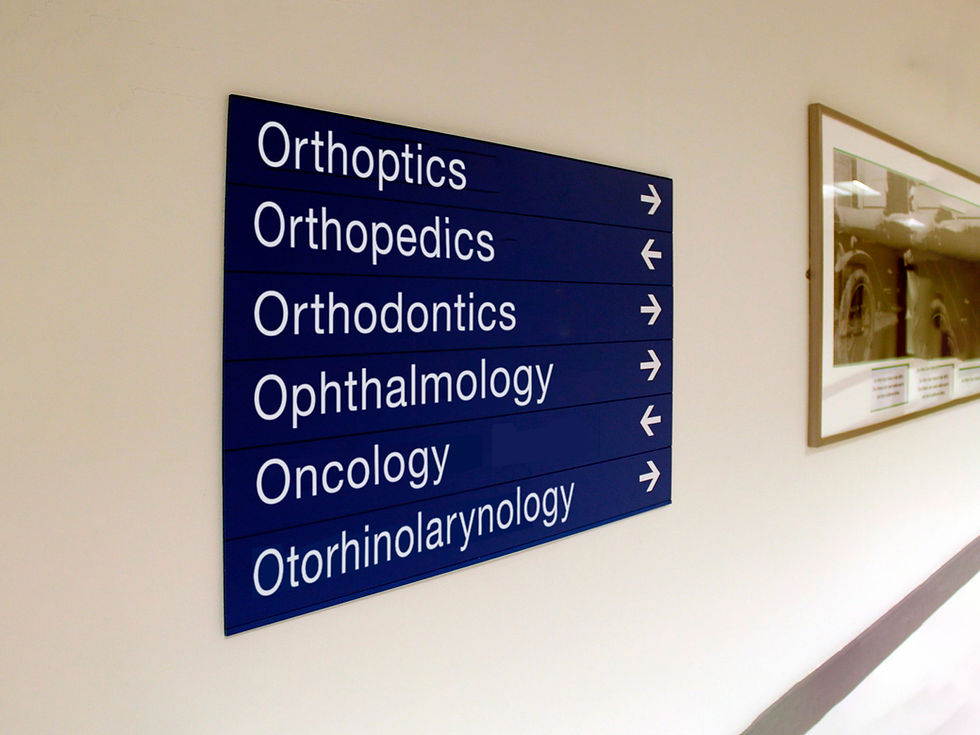The Art of Wayfinding: Creating Memorable Landmarks
- Marc Jenkins
- Sep 12
- 3 min read
Updated: Oct 15
Understanding Wayfinding and Its Importance
Wayfinding is more than just putting up signs—it's about making environments legible. It enables people to easily understand and navigate spaces. Landmarks play a central role in this process. They help us recognise locations, remember key points, and navigate with confidence. In many cases, landmarks are more effective and intuitive than standard signage.
When we give directions, we naturally reference memorable features. For instance, we might say, "Turn left at the statue" or "After the café, it's on your right." Such cues are easy for our brains to recall and for others to identify, making them highly effective.
The Role of Landmarks in Navigation
Distinct elements, such as sculptures, atriums, or colourful walls, do more than improve aesthetics. They serve as spatial anchors that people can use for orientation and to remember routes. Landmarks are great for general wayfinding, but signage is essential when detailed or specific information is needed—like room numbers or restricted areas.
However, effective signage is supportive rather than primary. If the environment already "speaks" clearly, then signs serve more as confirmation than as the main source of guidance.
Integrating Landmarks Early in the Design Process
Too often, landmarks are seen as purely decorative or simply as art installations. However, if integrated early in the design process, they can highlight decision points, guide movement, and support quick orientation. Landmarks shouldn't be added as an afterthought—they belong in early planning, alongside layouts and routes.
Identify the points where people pause, hesitate, or need to change direction. Provide environmental cues to aid them. This could mean framing a view to a tower, choosing distinct textures or colours for a lift area, or naming spaces after visible features. Spacious atria or other large features only function as landmarks if they have memorable qualities that help with orientation.
Characteristics of Effective Landmarks
Effective landmarks should be:
Recognisable (e.g., a large tiger sculpture)
Clearly different from nearby features or each other
Designed with cues to show direction, helping people orient themselves from all sides
Visually distinct from their surroundings
Describable with simple language
Meaningful across cultures and for all age groups
Not reliant just on colour, accommodating users with colour vision deficiencies
A well-designed space intuitively supports movement and orientation. When architecture, graphics, and details all work together, users move confidently without asking for directions.
Enhancing User Experience Through Thoughtful Design
Strategically used, landmarks are subtle yet powerful navigational aids. They enhance wayfinding and foster a sense of belonging. By considering the needs of users, we can create environments that are not only functional but also inviting.
The Balance Between Landmarks and Signage
While landmarks provide a general sense of direction, signage comes into play when specific information is required. The combination of both elements creates a comprehensive wayfinding system. It is essential to ensure that the two work in harmony.
Creating a Cohesive Wayfinding Strategy
To achieve a cohesive wayfinding strategy, it is crucial to:
Assess the environment and identify key decision points.
Integrate landmarks into the design from the outset.
Ensure that signage complements the landmarks rather than competes with them.
Test the wayfinding system with real users to gather feedback.
By following these steps, we can create spaces that guide users effortlessly.
Conclusion: The Future of Wayfinding Design
In conclusion, wayfinding is an essential aspect of design that goes beyond mere signage. By focusing on the integration of landmarks and thoughtful signage, we can create environments that are navigable and enjoyable. This approach not only aids in navigation but also enhances the overall user experience.
Studio Marc is an Associate Partner of Humanics Collective
By embracing these principles, we can help people navigate complex spaces and connect with their surroundings in both urban and natural settings.

